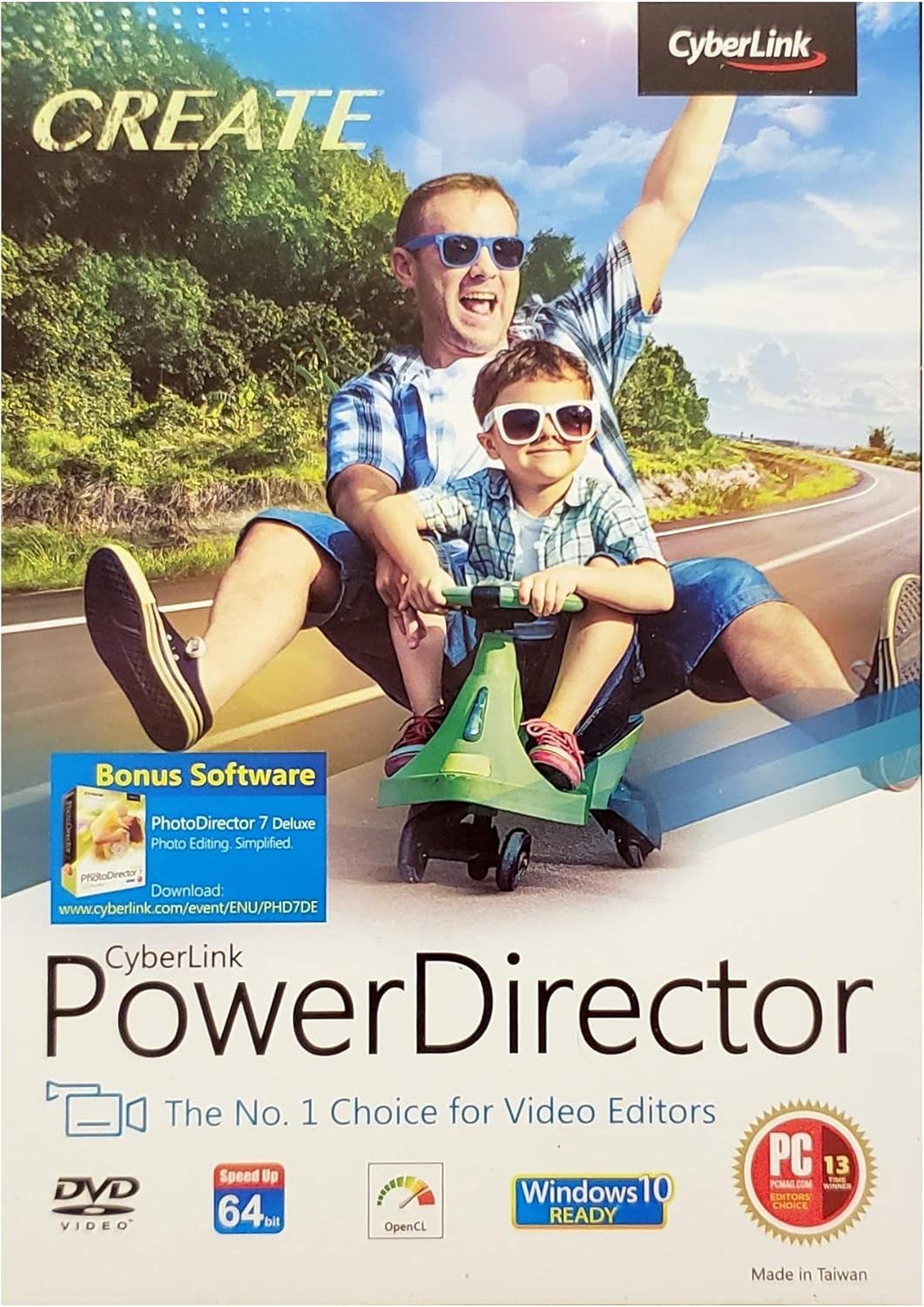
Not overnight anymore, but to create the properly formatted video for a DVD, you will probably have to wait about 2x realtime. Rendering is another story and, like it or not, you will have to wait for renders.

PowerDirector (and Studio and Video Studio) was fast enough for previews on a 2GHz computer.
#How to use cyberlink powerdirector to burn full movies software#
With a modern computer, say a 2GHz machine everything previews in realtime, especially since software in this class has limited compositing capabilities. Previewing means watching your edits to see how they look. Performance is primarily a function of how fast your computer is and there are two places where this is important: previewing and rendering. Again, PowerDirector is not alone here and it’s too bad that most entry-level software makes the split edit a difficult task. Split edits are fundamental and are useful on almost any project you can think of. As it is, you can mute the native audio track and adjust the volume the same as any other track, but you just can’t really perform split edits (where the audio continues underneath your video edits) without a lot of work. The only change that we would like to see in how PowerDirector handles audio is the ability to separate the original audio from our captured video. We did have some problems ripping audio from CDs into our copy of PowerDirector. This is not a completely magic feature and is limited to a certain percent of the original duration, but it can be a butt-saver. Another killer audio feature is the ability to time stretch and compress a clip without changing its pitch. We also really liked recorded and automated changes to the audio mixer’s faders during playback. rubber bands) to control the volume of the audio over time, which, for example, allows you to fade music in and out under your voiceovers.

PowerDirector includes audio envelopes (a.k.a. The situation for audio is similar, with a couple extra audio tracks you can mix into the source audio from your video. With the exception of Ulead’s Media Studio Pro, professionals will have to get the excellent Scenalyzer software ($39) to take advantage of DV tape scanning. While not an uncommon feature in apps of this level, it’s generally scoffed at by professionals who would much rather spend a couple of hours logging In and Out points manually to create a batch list. Then, you simply go back and click on the thumbnails to select the scenes you want, then go make yourself a smoothie while the clips capture. We liked the DV QuickScan feature, which runs through your entire tape and visually logs the various scenes. The simple capture process has an attractive interface that even beginners can understand, with standard navigation buttons such as play, stop and rewind.

The workflow of PowerDirector is clear and simple: capture, edit, author and burn (although "author" is called "produce"). But should you shell out an additional $100 for the full version? Workflow We have nothing bad to say about any of these packages: if it is included in the box, by all means, go ahead and give it a try. These products often come bundled with hardware products, such as capture cards or, more frequently, computer DVD burners.

When you first run CyberLink PowerDirector 3.0, you might be forgiven for mistaking it for Ulead’s VideoStudio 7 or Pinnacle Studio 9. The sub-$100 capture-edit-burn software field is a crowded one.


 0 kommentar(er)
0 kommentar(er)
